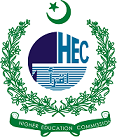Financial Performance of Islamic and Conventional Banks in Qatar: A Comparative Analysis
DOI:
https://doi.org/10.58932/MULD0010Keywords:
Financial stability, Qatar central bank, CAMELS rating system, Bank performance evaluationAbstract
The goal of bank performance evaluation is to guarantee that they efficiently utilize resources. Financial performance analysis is a critical tool for recognizing the bank's weaknesses and strengths across its numerous activities. The CAMELS technique is regarded as a supervisory tool to evaluate bank performance based on several aspects, according to the literature review. Regulators use on-site and off-site monitoring tools to assess a bank's financial stability. The CAMELS rating system encourages transparency, evolution, and change in all financial institutions. Furthermore, this method identifies the structural strengths and weaknesses of financial organizations. This study conducts a comparative analysis of Islamic and conventional banks in Qatar using the CAMELS rating scale from 2015 to 2020. We used a sample of 14 banks in Qatar, four of which were Islamic while the others were conventional. The findings indicate that Islamic banks showcase superior performance in Qatar while outperforming their conventional counterparts in many variables. However, none of the banks in Qatar could obtain a rating of 1, indicating areas of weaknesses that need to be worked on, particularly in the area of liquidity, which was a critical factor for all banks. According to this study, the Qatar Central Bank should improve the monitoring and screening of all Islamic banks in Qatar. Furthermore, it is suggested that the Qatar central bank employs the CAMELS system to track operations and field offices for banks functioning to facilitate regular access to a stable banking sector. Banks can use CAMELS to track their performance, and the necessary actions must be undertaken.
References
Alexakis, C., Izzeldin, M., Johnes, J., & Pappas, V. (2019). Performance and productivity in Islamic and conventional banks: Evidence from the Global Financial Crisis. Economic Modelling, 79, 1–14. https://doi.org/10.1016/j.econmod.2018.09.030
Arab Bank. (2015-2020). Annual Report. Retrieved from https://www.arabbank.com/mainmenu/home/investor-relations/financial
BNP Paribas Bank. (2015-2020). Annual Report. Retrieved from https://invest.bnpparibas/en/search/reports/documents/financial-reports
Al Khaliji Bank. (2015-2020). Annual Report. Retrieved from https://www.alkhaliji.com/web/investor-relations/annual-reports
Babu, M. R., & Kumar, A. K. (2017). Adequacy of the CAMELS rating system in measuring the efficiency of the banking industry: A retrospect. International Journal of Research in Arts and Science, 3(Special Issue, 2017), 03–06. https://doi.org/10.9756/ijras.8147
Barr, R. S., Killgo, K. A., Siems, T. F., & Zimmel, S. (2002). Evaluating the productive efficiency and performance of US commercial banks. Managerial Finance, 28(8), 3–25. https://doi.org/10.1108/03074350210767988
Bayraktar, S. (2018). Performance analysis of banks in Turkey using CAMELS approach case study: Six Turkish banks during 2005 to 2016. Journal of Business Research - Turk, 10(2). https://doi.org/10.20491/isarder.2018.458
Bilal, O., Durrah, O., & Atiya, O. (2016). Comparative study on performance of Islamic banks and conventional banks: Evidence from Oman. International Journal of Economics and Financial Issues, 6(4).
Cole, R. A., & Gunther, J. (1995). A Camel Rating's shelf life. SSRN Electronic Journal. https://doi.org/10.2139/ssrn.1293504
Commercial Bank of Qatar. (2015-2020). Annual Report. Retrieved from https://www.cbq.qa/EN/IR/Pages/annual-reports.aspx
Dang, U. (2011). The Camel rating system in banking supervision. A case study. Arcada.
Dash, M., & Das, A. (2013). Performance appraisal of Indian banks using CAMELS rating. He IUP Journal of Bank Management, 8(2), 31–42.
Doha Bank. (2015-2020). Annual Report. Retrieved from https://qa.dohabank.com/investor/financial-reports/annual-reports/
Dukhan Bank. (2015-2020). Annual Report. Retrieved from https://www.dukhanbank.com/investor-relations/financial-information
Fayed, I., & Esam, M. (2013). Comparative performance study of conventional and Islamic banking in Egypt. Journal of Applied Finance & Banking, 3(2), 1–14.
Ghazavi, M., & Bayraktar, S. (2018). Performance analysis of banks in Turkey using CAMELS approach: Case study of six Turkish banks during 2005 to 2016. İşletme Araştırmaları Dergisi, 10(2), 847–874. https://isarder.org/index.php/isarder/article/view/611
Hadriche, M. (2015). Banks' performance determinants: Comparative analysis between conventional and Islamic banks from GCC countries. International Journal of Economics and Finance, 7(9). https://doi.org/10.5539/ijef.v7n9p169
Hawaldar, I., Rahman, H., & Meero, A. (2017). A comparison of financial performance of Islamic and conventional banks in Bahrain. Asian Journal of Multidimensional Research, 6(9).
HSBC Bank. (2015-2020). Annual Report. Retrieved from https://www.hsbc.com/investors/results-and-announcements/annual-report
Jaffar, M., & Manarvi, I. (2011). Performance comparison of Islamic and conventional banks in Pakistan. Journal of Management and Business Research, 11.
John, P. (2021, December 27). Qatar's banking sector demonstrates resilience, registers 'impressive' growth amid COVID-19 challenges. Gulf Times. Retrieved March 14, 2022, from https://www.gulf-times.com/story/706973/Qatar-s-banking-sector-demonstrates-resilience-registers-impressive-growth-amid-Covid-19-challenges
Jordan, D. J., Rice, D., Sanchez, J., Walker, C., & Wort, D. H. (2010). Predicting bank failures: Evidence from 2007 to 2010. SSRN Electronic Journal. https://doi.org/10.2139/ssrn.1652924
Kakakhel, S., Raheem, F., & Tariq, M. (2013). A study of performance comparison between conventional and Islamic banking in Pakistan. Abasyn Journal of Social Sciences, 6(2).
Khouaja, D., & Lotfi Boumediene, S. (2014). Regulation and bank deficiency: Evidence from Europe. International Journal of Business & Finance Research, 8(23).
Kumar, V., & Sayani, H. (2015). Application of CAMEL model on the GCC Islamic banks: 2008-2014. Journal of Islamic Banking and Finance, 3(2). https://doi.org/10.15640/jibf.v3n2a1
López-Iturriaga, F. J., López-de-Foronda, Ó., & Pastor-Sanz, I. (2010). Predicting bankruptcy using neural networks in the current financial crisis: A study of US commercial banks. SSRN Electronic Journal. https://doi.org/10.2139/ssrn.1716204
Majumder, M. T., & Rahman, M. M. (2017). A CAMEL model analysis of selected banks in Bangladesh. SSRN Electronic Journal. https://doi.org/10.2139/ssrn.3068004
Mashreq Bank. (2015-2020). Annual Report. Retrieved from https://www.mashreqbank.com/en/uae/about-us/investors/financial-information/reporting
Masood, O., Mohammad Khan Ghauri, S., & Aktan, B. (2016). Predicting Islamic banks' performance through CAMELS rating model. Banks and Bank Systems, 11(3), 37–43. https://doi.org/10.21511/bbs.11(3).2016.04
Masraf Al Rayan. (2015-2020). Annual Report. Retrieved from https://www.alrayan.com/english/investor-relations/financials/annual-reports
Merchant, I. (2012). Empirical study of Islamic banks versus conventional banks of GCC. Global Journal of Management and Business Research.
Mirzaei, A., & Moore, T. (2016). Banking performance and industry growth in an oil-rich economy: Evidence from Qatar. The Quarterly Review of Economics and Finance, 60(c). https://doi.org/10.1016/j.qref.2015.06.001
Nicolae, B., & Maria, R. (2014). Study regarding the financial stability of commercial banks listed on Bucharest Stock Exchange of CAMELS rating outlook. Journal of International Studies, 7(3). https://doi.org/10.14254/2071-8330.2014/7-3/12
Olson, D., & Zoubi, T. (2008). Using accounting ratios to distinguish between Islamic and conventional banks in the GCC region. The International Journal of Accounting, 43(1), 45–65. https://doi.org/10.1016/j.intacc.2008.01.003
Qatar International Islamic Bank. (2015-2020). Annual Report. Retrieved from https://www.qiib.com.qa/Documents/List/FinancialReports
Qatar Islamic Bank. (2015-2020). Annual Report. Retrieved from https://www.qib.com.qa/en/investorrelations/financial-information/annual-reports/
Qatar National Bank. (2015-2020). Annual Report. Retrieved from https://www.qnb.com/sites/qnb/qnbqatar/page/en/enannualreports.html
Qatar National Vision 2030. Government Communications Office. (2019, August 1). Retrieved March 14, 2022, from https://www.gco.gov.qa/en/about-qatar/national-vision2030/
Rojas-Suarez, L. (2001). Rating banks in emerging markets: What credit rating agencies should learn from financial indicators. SSRN Electronic Journal. https://doi.org/10.2139/ssrn.300891
Rozzani, N., & Rahman, R. A. (2013). Determinants of bank efficiency: Conventional versus Islamic. International Journal of Business and Management, 8(14). https://doi.org/10.5539/ijbm.v8n14p98
Saba, I., & Kouser, R. (2012). Gauging the financial performance of banking sector using CAMEL model: Comparison of conventional, mixed, and pure Islamic banks in Pakistan. International Research Journal of Finance and Economics, 82.
Standard Chartered Bank. (2015-2020). Annual Report. Retrieved from https://www.sc.com/en/investors/financial-results/
Top banks in Qatar. (2021, September 15). Corporate Finance Institute. Retrieved March 14, 2022, from https://corporatefinanceinstitute.com/resources/careers/companies/top-banks-qatar/
United Bank. (2015-2020). Annual Report. Retrieved from https://www.ubldirect.com/Corporate/InvestorRelations/FinancialStatement.aspx
Venkatesh, D. J., & Suresh, C. (2014). Comparative performance evaluation of selected commercial banks in the Kingdom of Bahrain using CAMELS method. SSRN Electronic Journal. https://doi.org/10.2139/ssrn.2418144
Wasiuzzaman, S., & Gunasegavan, U. (2013). Comparative study of the performance of Islamic and conventional banks. Humanomics, 29, 43–60.
Yuksel, S., Dincer, H., & Hacioglu, U. (2015). CAMELS-based determinants for the credit rating of Turkish Deposit Banks. International Journal of Finance & Banking Studies, 4(4), 1–17. https://doi.org/10.20525/ijfbs.v4i4.35.









